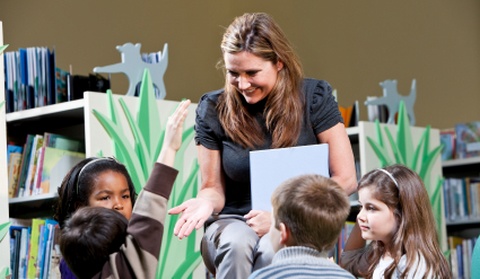Children LOVE to hear a good story. What better stories to tell than the true ones contained in the Bible! There are stories of great heroes of the faith and incredible events contained within the pages of God’s Word that amaze and captivate the young and the old!
Reading Bible stories whether it be from the actual Bible or from Bible story books, is a great way to teach your Bible lesson. However, there are a few precautions that must be taken.
First, all story books must be previewed for accuracy. Sometimes inaccuracies are obvious and sometimes not so obvious. We should always read the actual scriptures to know what is or isn’t accurate. As for things that might not be so obvious, here are a few examples. How many windows were on the ark? Many books show an ark with multiple windows. How old was Daniel when he was thrown in the lions’ den? Many books show a young man, but we know from scripture that he would have been a rather old man. How big was David when he killed Goliath? He couldn’t have been a really young boy (like 9-10) as some books portray. We know that because Saul was offering his armor to him and he was “head & shoulders” above other men in Israel. David would probably be an older teenager when this occurred.
Now these inaccuracies are not things that are critical to salvation, but why be satisfied teaching an error when we can teach truth? Am I saying that we can not use a book that shows a picture that is incorrect? No I am not. When I am teaching a group of children, let’s say 4 & 5 year olds, and I am reading a book with inaccurate pictures, I just point it out to the children. I would say something like, “Would you look at that ark? I can’t believe it! The person that painted that picture really messed something up. Can anyone tell me what that is?” At this point, children are surprised and excited to be finding a mistake that an adult would make in a book. If they don’t find it, I point it out and explain that this picture is not what God tells us really happened in the Bible. I would have my Bible out and read what the actual scripture says and then proceed to read the book. Simple as that!
Also, when you choose books, use ones that are simple enough and visually appealing. The illustrations should be clear and simple, (i.e. not something that resembles a “Where’s Waldo” book)! Do NOT be a slave to the words written in the book. Sometimes you may need to just skim over books that are too wordy for your younger age group.
Read with enthusiasm! Get excited, sad, scared, or whatever emotion is happening by your characters. Use your voice to convey the feelings being expressed.
Feel free to ad lib with your book. You do NOT have to read every word on a page! It is perfectly acceptable to mix in some of your own comments when reading such as, “Oh no! Joseph is falling in the pit. How’s he ever going to get out?” It will show your students that you aren’t just reading, but you are just as excited and into the story as they are!
As you are reading, continually engage the children with questions that will cause them to make predictions and observations as you are reading. “What do you think happened next? or “Why do you think someone would do that?”
Children love to be read to! As in everything you do with them, approach reading aloud with joy and fun that will cause your students to love books and better yet, THE Book!
